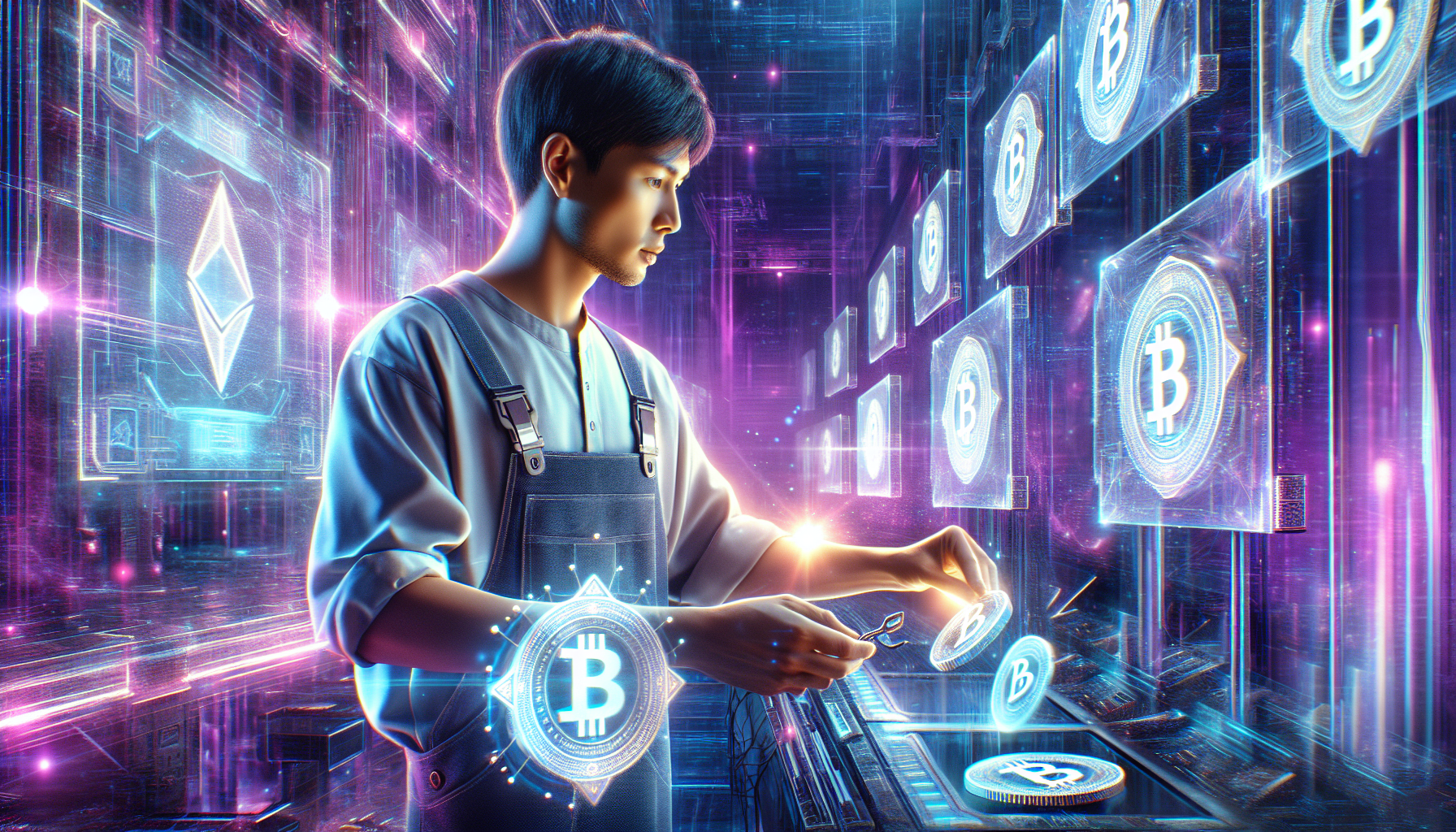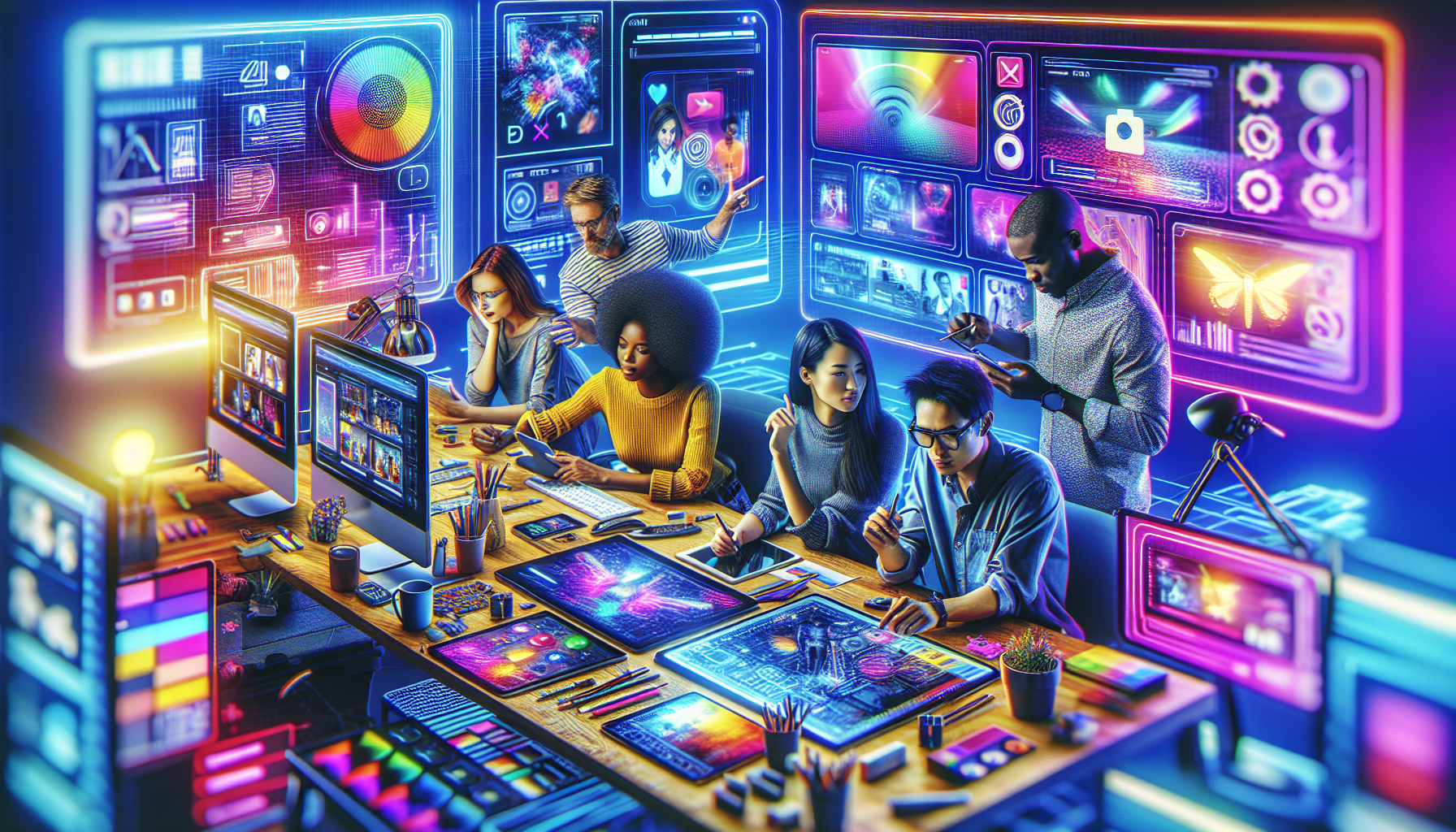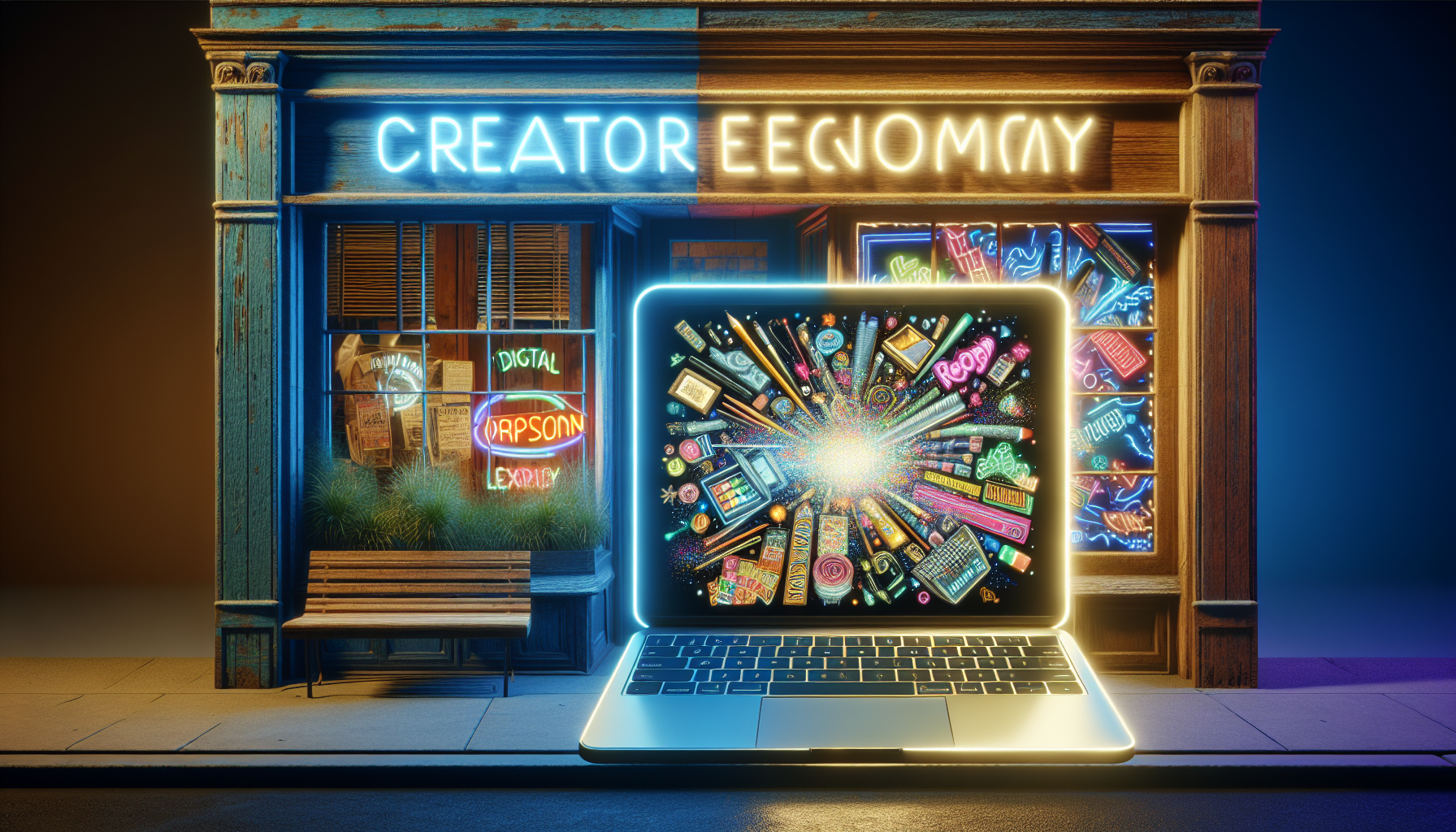
 In the evolving landscape of the creator economy, NFTs are empowering creators more than ever by offering unparalleled autonomy. These blockchain-based assets provide creators with a way to maintain control over their work while fostering direct relationships with their audiences.
In the evolving landscape of the creator economy, NFTs are empowering creators more than ever by offering unparalleled autonomy. These blockchain-based assets provide creators with a way to maintain control over their work while fostering direct relationships with their audiences.
A New Era of Control
Unlike traditional platforms where content can be replicated and monetized by third parties, NFTs allow creators to retain full ownership of their digital art, music, or other creations. By minting an NFT, creators can set terms for resale, including royalty percentages that grant them a share of future sales. This enhances their ability to profit from the longevity of their work without losing control over it.
Real-World Examples of Creator Empowerment
Musicians like Kings of Leon have released albums as NFTs, allowing them to engage directly with fans and bypass traditional distribution channels. This level of direct access gives artists the potential to explore innovative revenue streams. Similarly, digital artist Beeple made headlines with a $69 million NFT sale, proving the substantial financial returns possible within this ecosystem.
Platforms Enabling Independence
Web3 platforms such as OpenSea, Rarible, and Foundation are at the forefront, allowing creators to mint, sell, and auction their NFTs without intermediaries. Unlike YouTube or Instagram, which take a share of advertising revenue or require subscription-based support systems like Patreon, NFT marketplaces enable creators to receive payment upfront or as ongoing royalties.
Broader Impacts on Digital Culture
NFTs are not just a monetary boon but a cultural phenomenon reshaping how creators perceive ownership and value. By enabling decentralized content monetization, NFTs redefine the artist-audience relationship, transforming passive consumption into active participation. This shift is likely to inspire more innovations, driving increased creator involvement in the digital economy.
Decentralizing creative ownership is empowering artists like never before. NFTs provide tools for maintaining autonomy over owned content, and in relying less on traditional channels, creators can redefine success on their terms in the burgeoning creator economy.
monetization opportunities in digital art
NFTs are revolutionizing how digital artists monetize their work, providing an array of exciting opportunities that were previously unavailable. With NFTs gaining traction, creators are exploring new revenue streams and connecting with audiences in innovative ways.
Diversifying Revenue Streams
NFTs offer digital artists a unique avenue to sell their art directly to collectors, bypassing traditional gatekeepers like galleries and auction houses. Platforms such as OpenSea, SuperRare, and Nifty Gateway are at the forefront, enabling artists to mint and sell their digital creations as NFT tokens. By doing so, they can earn immediate income from initial sales and benefit from built-in royalty mechanisms on secondary sales.
Real-World Success Stories
Digital art as a monetization frontier is exemplified by artists like Pak and Beeple. Beeple’s “Everydays: The First 5000 Days” not only captured global attention with its $69 million auction at Christie’s but also highlighted the significant earning potential within this space. Similarly, Pak has grossed millions by selling a unique collection of digital art pieces, showcasing the substantial possibilities NFTs offer.
Unlocking New Experiences
NFTs are not limited to the sale of static digital images. Artists can create interactive or multimedia pieces that offer buyers exclusive experiences or content. This innovation is particularly apparent in collaborative works or ongoing projects where buyers get sneak peeks, additions, or participatory rewards. For instance, digital collectible series can include hidden art pieces or offer owners VIP access to upcoming drops or virtual shows.
Empowering Independent Artists
Beyond financial incentives, NFTs shift the power dynamics in favor of creators, granting them the autonomy to decide how their art is experienced and valued. By leveraging social media platforms like Instagram and Twitter to showcase NFT drops, artists strengthen community ties and drive engagement. Additionally, services like Patreon or Substack can be integrated for further monetization by offering behind-the-scenes insights or creating subscription models around NFT projects.
In the modern creator economy, NFTs play a pivotal role in reshaping income opportunities. They provide tools for digital artists to capitalize on their creativity and push the boundaries of how art is conceived and consumed in the digital age. As the NFT ecosystem grows, so will the opportunities it offers to creators, fueling a vibrant and diverse creator economy.
building communities through unique tokens
In the creator economy, NFTs have become more than just digital assets; they’re powerful tools for building and enhancing communities around unique tokens. This connectivity goes beyond simple transactions, fostering stronger and more engaged creator-fan relationships.
Engaging Fan Base with Exclusivity
NFTs allow creators to engage their fan base using exclusive content only available through ownership of these tokens. Musicians experimenting with NFTs, like Grimes, have released exclusive digital art accompanied by original music tracks, available to NFT holders. This strategy builds a sense of belonging and privilege among fans, as they gain access to one-of-a-kind content unavailable elsewhere.
Creating Interactive Experiences
By offering interactive experiences and benefits, creators transform passive audiences into active participants. Platforms like Zora and Mirror facilitate this transition by allowing creators to mint NFTs that might include evolving benefits or added content over time. These platforms also enable fans to directly support and influence their favorite creators by participating in decision-making processes, such as voting on future projects or accessing token-gated events and discussions.
Strengthening Community Bonds
NFTs facilitate not just a transaction, but a community-centric approach where creators and fans engage in meaningful relationships. An example of this dynamic is seen in the work of digital artist Fewocious, who frequently engages with fans via live virtual events, strengthening community bonds by offering NFT collectors exclusive access to new releases and community-driven art experiences.
Fostering Collaboration and Innovation
The NFT ecosystem encourages collaborations that amplify creative interactions. Social channels like Discord serve as vibrant hubs for NFT communities where creators and fans not only discuss projects but also collaborate on new ideas. This collective engagement fosters a culture of innovation, driving creators to experiment with their creative output and resulting in unique, community-driven projects.
NFTs are carving out a vital role in the digital landscape by transforming how communities around creators are structured and engaged. Through unique tokens, creators are finding new ways to cultivate loyal, vibrant communities while exploring innovative content formats, contributing significantly to the expansion and sustainability of the modern creator economy.
challenges and risks in the NFT market
In the rapidly expanding creator economy, NFTs are not without their hurdles and risks, which creators must navigate to fully harness their potential. This landscape is fraught with challenges that require understanding and strategic maneuvering.
Volatility in Value
NFTs can be a volatile investment, with values fluctuating dramatically in short periods. While artists like Beeple have achieved astronomical sales, such success is not guaranteed. The market’s unpredictability can affect creators who depend on NFT sales for income stability.
Environmental Concerns
NFTs often rely on blockchain technologies like Ethereum, which have significant environmental impacts due to high energy consumption. This has prompted discussions around sustainability, urging creators and platforms to consider greener alternatives. Ethereum’s shift towards a proof-of-stake model is a step in the right direction, but creators should remain informed about eco-friendlier options.
Intellectual Property and Copyright Issues
The decentralized nature of NFTs raises questions about copyright and intellectual property rights. Creators may face challenges in protecting their work from unauthorized minting or alterations. It’s crucial for artists to clearly understand and safeguard their intellectual property rights when venturing into the NFT space.
Barrier to Entry for New Creators
Despite the egalitarian promises of the NFT ecosystem, new creators may find it challenging to break through without an established reputation or community. The oversaturation of digital art can make it difficult for lesser-known creators to gain visibility and attract buyers.
Market Saturation and Perception
The NFT market’s relatively low barrier to creation has led to an oversupply of assets, making quality discernment a daunting task for buyers. Additionally, public perception and skepticism around NFTs as a speculative bubble can impact a creator’s ability to sell their work effectively.
Platform Risks
Choosing the right platform is vital, as varying fees, policies, and security measures can impact creators’ profitability and asset safety. Platforms like OpenSea or Rarible offer different features and fee structures, so creators must evaluate these aspects carefully to align with their goals.
Despite these challenges, the role of NFTs in the creator economy continues to entice those looking to innovate in digital artistry. With strategic planning and a keen awareness of these risks, creators can leverage the opportunities NFTs present while contributing to the evolving digital culture.
the future impact of NFTs on the creator economy
As we look toward the future, the impact of NFTs in the creator economy seems poised for an even more significant transformation. The potential of NFTs extends beyond current applications, hinting at revolutionary changes in how creators interact with audiences, monetize content, and build sustainable careers.
Revolutionizing Content Creation
The NFT landscape is evolving to provide creators with new ways of producing immersive content. Innovations like metaverse integration will allow artists, musicians, and writers to create dynamic, interactive environments where their NFT assets can dwell. For instance, digital artworks can be showcased in virtual galleries within the metaverse, allowing for a shared audience experience and opening up new revenue streams through ticketed virtual events.
Redefining Intellectual Property
The coming years might see NFTs redefine intellectual property rights, offering creators comprehensive control over their creations. Smart contracts embedded in NFTs can automate royalty payments across a range of platforms, ensuring creators benefit financially wherever their work is used. Projects like Mirror are experimenting with these possibilities, providing tools for creative writers to embed IP rights directly within their published content.
Expanding Platforms and Accessibility
Platforms enhancing the accessibility of NFTs will further broaden the creator economy. Initiatives focusing on reducing environmental impact, such as Ethereum’s transition to proof-of-stake, are expected to address sustainability concerns and encourage wider adoption. Additionally, user-friendly interfaces will lower barriers for technophobic artists, allowing a more diverse range of creators to participate in this digital renaissance.
Decentralized Autonomous Organizations (DAOs)
NFTs and DAOs will converge to offer creators entirely new governance models for managing their communities and creative outputs. By utilizing tokens as voting mechanisms, creators and their audiences can collectively steer the direction of artistic projects, making the content creation process more democratic. This approach could redefine audience engagement, making them not just consumers but integral parts of the creative journey.
With NFTs continuing to garner interest and adoption, their role in the creator economy is set to deepen, fostering innovative pathways for artistic expression and financial empowerment. As technology advances, the intersection of creativity and blockchain will likely lead to uncharted territory, redefining digital culture and economic models in the arts.

